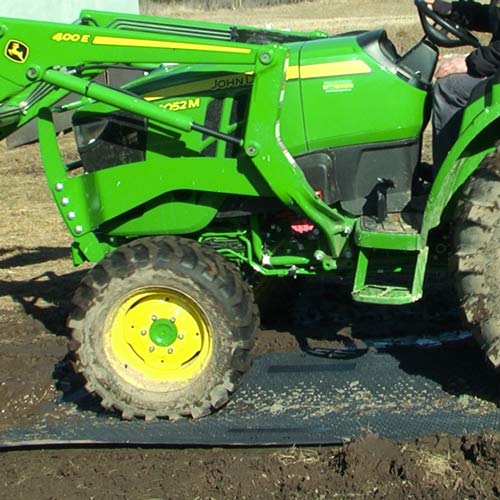How to Prevent Your Tractor From Getting Stuck in Mud
Related Product: Ground Protection Mats Black 1/2 Inch x 3x8 Ft. Diamond/Diamond
Preventing A Tractor From Getting Stuck in The Mud
If you take a little time to plan ahead, you can often avoid scenarios that would cause your tractor to get stuck in mud.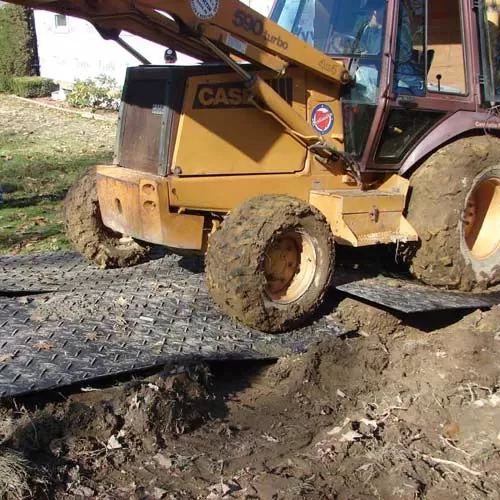
Buy the Right Tractor
Before you buy a tractor, think about how you’ll be using it and the types of ground that you have to traverse. If you know you’ll be dealing with plenty of mud, then don’t buy a small tractor that will instantly sink.
Instead, opt for a larger tractor with wider, larger wheels and plenty of power. Always invest in a tractor with working four-wheel drive, and get something that’s large enough for the job.
Avoid Mud
If you can, avoid traveling through muddy areas until they’ve had time to dry out. While not always practical, it can be helpful if you’re able to plan your work around the weather, avoiding working just after a heavy rain.
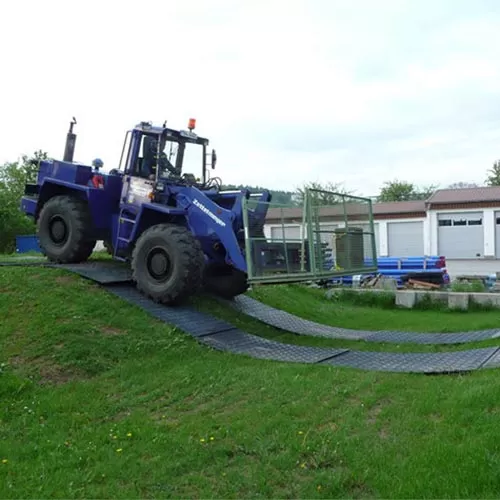
Depending on where the mud is located, you may be able to dump a load of gravel into the deepest areas and use that to help stabilize the mud. This won’t work for larger, deeper muddy areas, but it can be key to treating smaller problem areas in a driveway or road.
If you know that you have certain problematic mud areas every year, look for ways to fix those areas. Changing the grade of the surrounding earth or even installing a French drain can help to redirect water runoff to minimize or even prevent mud from forming in the future.
Use Traction Mats for Mud
When you have mud that you can’t fix with gravel, you can use ground protection mats to create a road for your tractor, trailer, and any other farm equipment. A product like the AlturnaMats Ground Protection Mats is a perfect choice for your tractor or other heavy machinery.
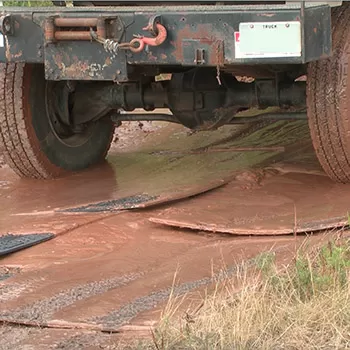
This mat is capable of supporting loads up to 120 tons, and its polyethylene is absorbent and will never become waterlogged. The mat features handles that make it easy to transport, and it features a high-traction surface to give your tires the grip that they need.
Measuring 4x8 feet, the mat is wide enough to support each wheel, and you can lay multiple mats together to create a road across muddy areas. These mats make it easy to travel anywhere you need to go without getting your tire buried in a muddy bog, areas that are soft because of spring rain, low-lying and muddy areas, and more.
The mats are easy to clean, since you can just hose them off, and they can be stored away until you need them next. You’ll likely find that they’re versatile tools that you can use for more than just your tractors.
What to Do If Your Tractor Does Get Stuck
If your tractor does get stuck, you can use several strategies to free it. To start, raise up any attachments and put the tractor in four-wheel drive.Put the tractor in reverse and attempt to reverse out of the mud. If that doesn’t work, stop the tractor and dig mud away from all four tires.
Next, place boards or ground protection mats behind the tractor wheels. Attempt to reverse up onto the boards or mats.
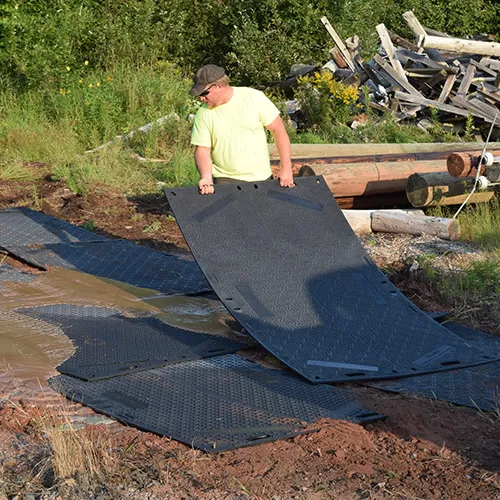
Using those boards or mats will give your tractor extra traction, but it’s important to go slowly to give your wheels a chance to grip those surfaces. If the mud is too deep or the surfaces are too slick, then it’s time to get the help of another tractor.
Ask another tractor owner to help pull you out, but make sure that they stay well away from the mud so that their tractor doesn’t sink. If possible, have them pull your tractor out backward, so you will stay in the same ruts that you created when you entered the mud, creating less resistance.
It’s important to choose a tractor and tow chain that are strong enough for the job. Ideally, the tractor should be at least as large and powerful as your tractor, but it’s always better to call in a larger tractor if one is available.
Connect the chain to the drawbars of both tractors and make sure that your stuck tractor is in reverse before attempting to pull it free. The other driver should slowly pull the tractor out, and anyone else present on the site should stand far back, just in case a chain snaps.
Once your tractor is out of the mud, be sure to carefully check it over for any damage. Pay close attention to its underside and its attachments.
